
Weed kill mulch
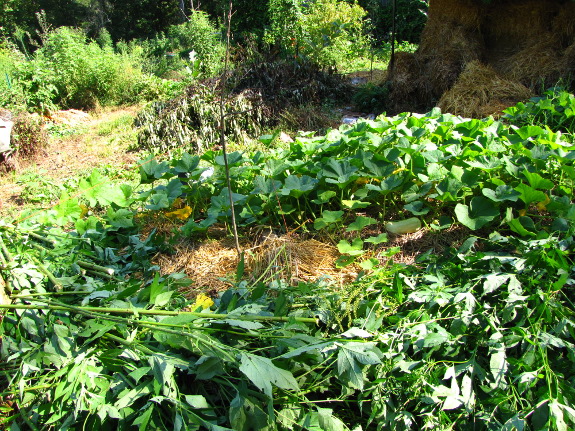
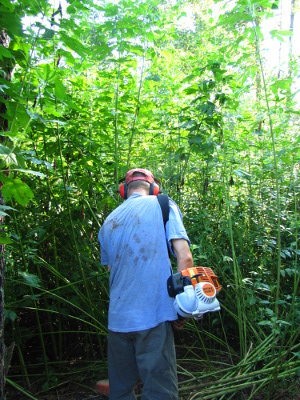 Mid to late summer is the
perfect time to start next year's no-till garden beds. Most of
the big weeds that grace neglected ground --- ragweed, wingstem, and
goldenrod for us --- are blooming or are about to bloom but haven't
gone to seed yet. At the pre- to mid-bloom stage of a plant's
life, the weed has pumped as much of its energy as possible into
creating viable blooms, so if you cut the plants now, they'll be
hard-pressed to regrow. (You take advantage of this fact when you
mow-kill
cover crops at this
same life stage.)
Mid to late summer is the
perfect time to start next year's no-till garden beds. Most of
the big weeds that grace neglected ground --- ragweed, wingstem, and
goldenrod for us --- are blooming or are about to bloom but haven't
gone to seed yet. At the pre- to mid-bloom stage of a plant's
life, the weed has pumped as much of its energy as possible into
creating viable blooms, so if you cut the plants now, they'll be
hard-pressed to regrow. (You take advantage of this fact when you
mow-kill
cover crops at this
same life stage.)
Meanwhile, midsummer is
the perfect time of year to smother lower-growing perennials (like
grasses and clover) in areas where you want garden beds to grow next
year. Cool season grasses have already gone to seed and are
currently trying to sock away as much solar energy as possible to store
in their roots and allow the plants to pop back up early next
spring. By covering up perennials in the middle of the summer,
you have the best chance of killing these hardy plants so that the soil
will be completely weed-free and ready for vegetables come spring.
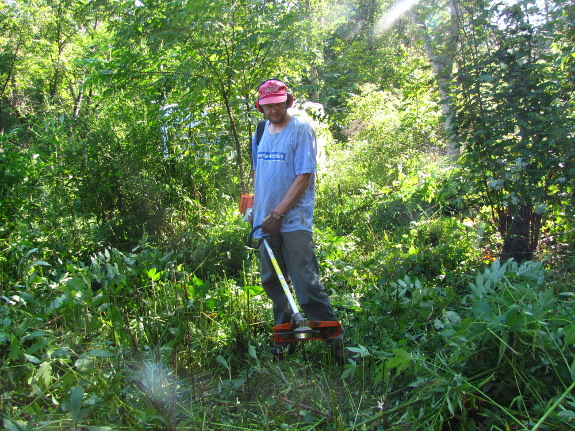
So "weed" in the title
of this post does double duty --- I'm using weeds to create a kill
mulch to smother other weeds. The main component of my weed kill
mulch is those fifteen
foot tall ragweed plants from one of our chicken pastures --- I'm pretty sure the
ragweed shaded out the understory and made it harder for our Cuckoo
Marans to find tender forage. Mark's ninja
blade made quick
work of the huge ragweed stalks, then I gathered them up and tossed
them over the fence to lay alongside the existing beds in the forest
garden.
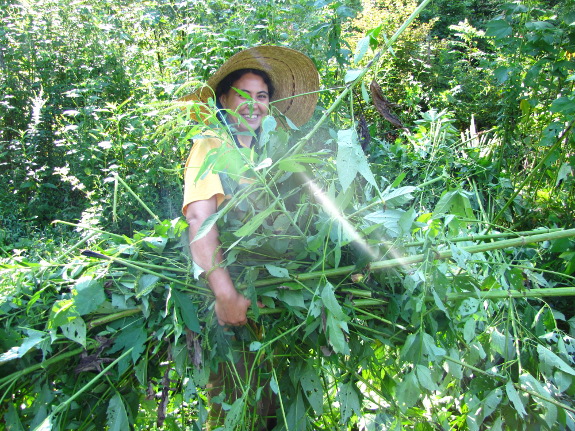
Even though the idea
makes a lot of sense, I should warn you up front that this is another
crazy experiment. That said, I already tried out a similar weed
kill mulch last week when I raked up all
of the stalks Mark whacked down in the forest garden itself and use them to increase my
mulched area. The weeds quickly died back to a black mass of free
mulch, so I'm pretty confident the weed kill mulches will work,
although they might need another layer of weeds added on top if
perennials start popping up through.
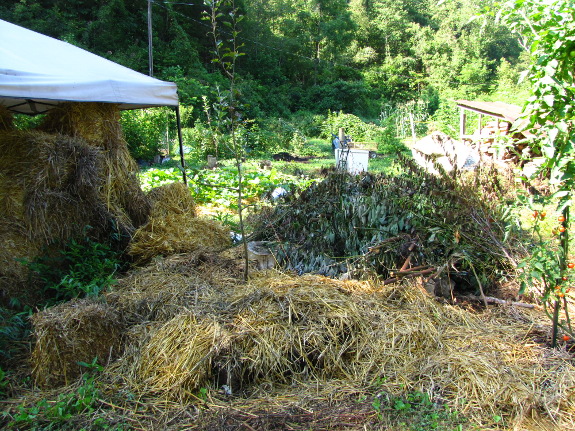
The other factor to
consider is the C:N
ratio of your
weeds. I had Mark cut a lot of saplings in one of the deer
danger zones, then I
piled them in another part of the forest garden in a sort of horizontal
brush pile (three or four feet deep.) Branches and young trees
are too woody to rot down into an acceptable mulch for vegetables by
next spring, so I'll either top them off with manure and turn the area
into a hugelkultur bed or just throw weeds on top and let the brush
pile slowly rot down. Ragweed cut at the blooming stage, though,
is only moderately woody, so I have high hopes we'll be able to plant
directly under those kill mulches next spring.
Want more in-depth information? Browse through our books.
Or explore more posts by date or by subject.
About us: Anna Hess and Mark Hamilton spent over a decade living self-sufficiently in the mountains of Virginia before moving north to start over from scratch in the foothills of Ohio. They've experimented with permaculture, no-till gardening, trailersteading, home-based microbusinesses and much more, writing about their adventures in both blogs and books.
Want to be notified when new comments are posted on this page? Click on the RSS button after you add a comment to subscribe to the comment feed, or simply check the box beside "email replies to me" while writing your comment.

Well, that's OK. I'm trying to find one a little cheaper than a cruise to Mexico. I'll keep up the search for something closer. Thanks for the reply.
J.